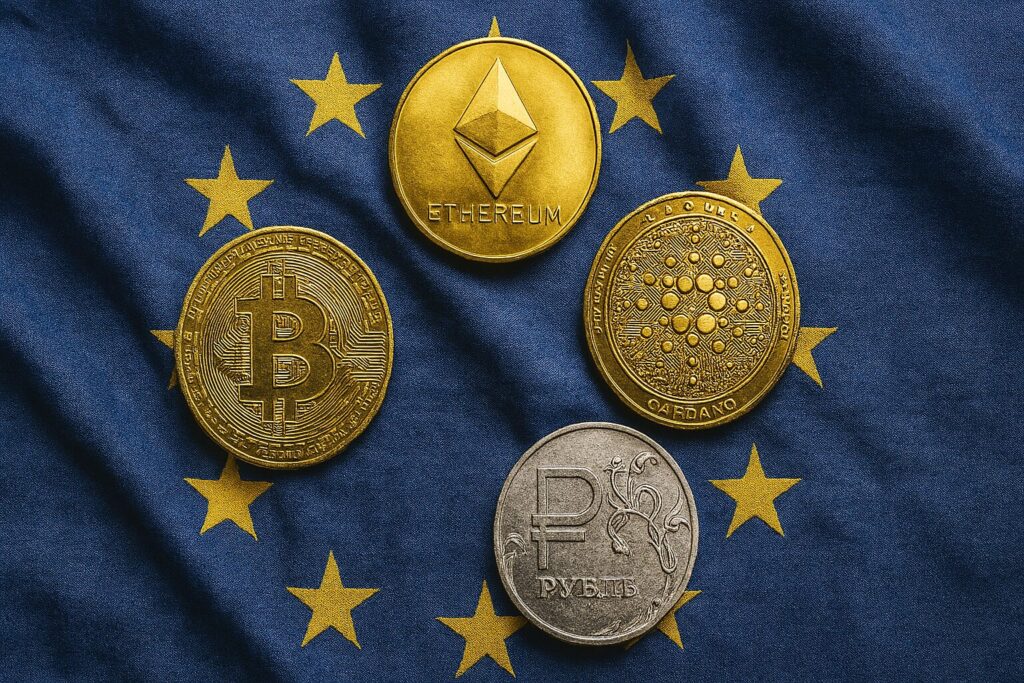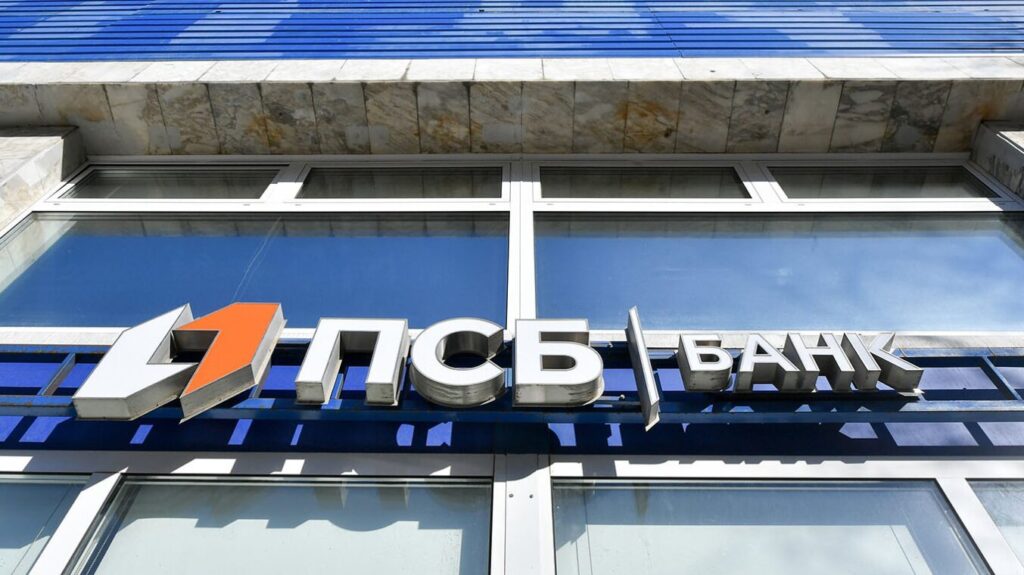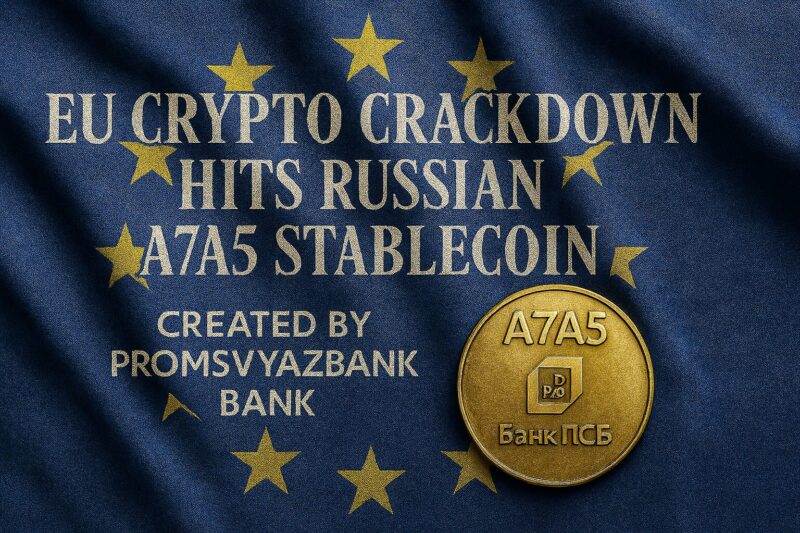The A7A5 stablecoin ban is set to take effect on November 25, 2025, and right now the European Union is prohibiting all transactions involving this ruble-backed digital asset. EU crypto regulation has now extended to target the stablecoin that’s linked to Promsvyazbank sanctions, along with Russian digital assets that have been used to get around financial restrictions. The A7A5 stablecoin, which is actually co-owned by sanctioned Moldovan banker Ilan Shor and also Russia’s state-owned Promsvyazbank, had processed about $68 billion in transactions and had some 41 billion tokens in circulation by September 2025.
EU Crypto Crackdown Hits A7A5 Stablecoin, Promsvyazbank, Russian Assets

The European Union announced its 19th sanctions package on October 23, 2025, and this marks the first comprehensive A7A5 stablecoin ban that’s targeting cryptocurrency infrastructure. The EU Council described the ruble-backed crypto as “a prominent tool for financing activities supporting the war of aggression,” which has been causing concern among regulators.
At the time of writing, Kaja Kallas, EU High Representative for Foreign Affairs and Security Policy, stated:
“We have just adopted our 19th package of sanctions. It targets Russian energy, banks, crypto exchanges, and entities in China, among others. The EU is also regulating the movements of Russian diplomats to counter attempts at destabilisation. It is becoming increasingly difficult for Putin to finance his war. Every euro we deny Russia is one it cannot spend on war. The 19th package will not be the last.”
Also Read: Trump Holds ‘Massive’ Tariffs Until BRICS Member India Cuts Russian Oil
Promsvyazbank Sanctions Drive A7A5 Stablecoin Ban


The Promsvyazbank sanctions were actually imposed back in February 2022, cutting the Russian state-owned bank off from European financial systems. The A7A5 stablecoin ban now extends these Promsvyazbank sanctions to cryptocurrency networks. Added to that, it’s targeting the digital asset that was issued through A7 Company. The stablecoin facilitated ruble conversions through the Kyrgyzstan-based Grinex exchange, which was created by former Garantex employees after that platform had faced sanctions.


Maria Luís Albuquerque, Commissioner for Financial Services and the Savings and Investments Union, said:
“With this 19th package we are deploying a very wide range of additional measures to weaken Russia’s faltering economy even further. A ban on LNG will hit where it hurts most, while additional measures on financial services – including crypto – and stronger anti-circumvention measures will also have a strong impact.”
The A7A5 stablecoin ban is prohibiting EU-based Virtual Asset Service Providers from handling the token, with enforcement beginning November 25. Even eight banks and oil traders from Tajikistan, Kyrgyzstan, Hong Kong, and the UAE are facing transaction bans. These were all added for enabling Russian digital assets to bypass restrictions.
Also Read: BRICS: Trump Says India Will End Russian Oil Imports, New Delhi Denies
Impact on Russian Digital Assets and EU Crypto Regulation
Ruble-backed crypto accounted for about 2.37% of EU Bitcoin trading volume in the first half of 2025. This now encompasses Russian digital assets that are operating on Ethereum and Tron blockchains. The stablecoin having processed around $9.3 billion through Grinex in just four months despite U.S. sanctions on operators.





